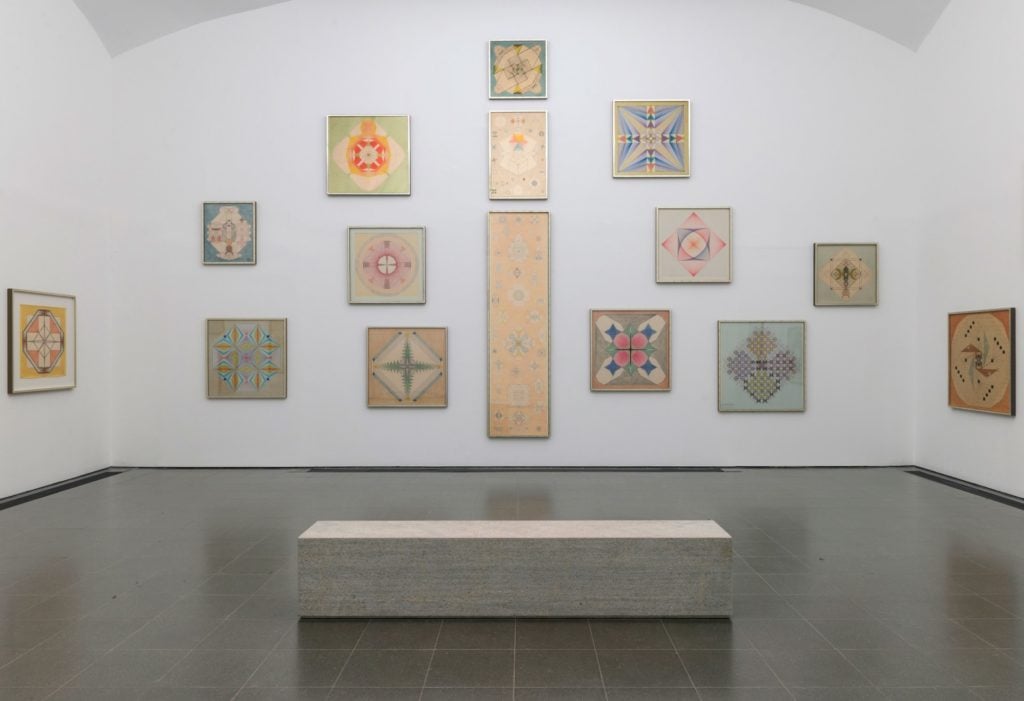Walter Russell was an impressionist style painter, but his most important contribution to visual imagery and its ability to carry ideas was in the development of a range of diagrammatic descriptions of mystic energy forces. These diagrams have recently come back into fashion, probably because of a rise in interest of artists such as Hilma of Klint.
Bruno Latour has developed a system of thinking that is an "anthropology of science". It explores the dualistic distinction that modernity has made between nature and society. Pre-modern peoples argues Latour, made no such division and a tidy nature/culture dualism was in fact never possible. He cites a particular moment in time as the beginning of this separation, the argument between Hobbes and Boyle as to what constitutes evidence. Hobbes is someone that saw evidence as something that comes from the masses of people that experience the world, evidence being something that emerges from social discourse, while Boyle points to another type of evidence, that which was embedded within a scientific experiment, such as in his case the proof of the existence of a vacuum by experiment. The tacit practice of the air pump and the dexterity it required is witnessed not by texts or languages but by silent things such as air pumps and Hobbes could not accept that this type of evidence could outweigh the voices of many people.
It was Beuys as an artist that made us aware that being an artist was more akin to being a shaman type figure, one that operated as a catalyst between people and the various ways that they came to understand the world. He was very interested in systems and saw his work as interventions that might change what were becoming ossified systems that pervaded Western society. As well as looking back to Steiner he looked as Eastern philosophies and religions as signs of alternative approaches to living and he began to integrate various aspects of his life into a larger diagram that was continually evolving. For instance he might focus on money and how it could be both used to lever change and at the same time be subject to a rethinking, whereby as a capitalist form of support for commercial exchange it was becoming redundant. This particular tendency within the various strands of contemporary practice has been brought together in the net exhibition, Diagrams of Power which showcases a range of artists working in this territory at the moment. However what seems to be missing is the touch of the esoteric, we need to remember that Thomas Edison was fascinated with the occult and that he initially invented the telephone to talk to the dead. The existence of an invisible, non-material realm is still with us but we now call it 'dark matter', these unknown territories will hopefully always be with us, they are the gaps in our knowledge that allow us as artists to do the things we do, without having to always justify ourselves in the court of rationality.
 |
| Emma Kunz Visionary Drawings: Serpentine Galleries Coda: I have looked at this area of work myself at times, in particular now that I'm part of the group, 'Life hacks for a limited future', I have developed a diagram for the group to help envisage the various stages of ageing. The idea was to create a diagram with an image embedded within it, in this case a scarab beetle was the rough guide to the overall shape. In Egyptian times it was a symbol of immortality, resurrection, transformation and protection, so seemed a good model on which to base a diagram that was designed to get older people to think about facing up to death. Because this is an age of the mobile phone I then had to redesign my diagram to fit a phone screen, a note to self about the fact that technology moves on. Louise Despont is perhaps the artist who is working most powerfully in this area at the moment. She uses stencils to create large scale 'spiritual diagrams' often using old ledger paper as a surface to work on. Another addition: My old friend Terry Hammill on seeing this post sent me a story about when in 1971 he was in the USA and came across the work of Soleri, who had published a wonderful book called ‘Arcology: the city in the image of man’. Paolo Soleri had published his ‘Arcology' book just two years before in 1969 and his spiritual ideas are very similar to the ones introduced above, the difference being that Soleri was an architect and was determined to erect real buildings that would reflect his cosmological ideas. See also: |



















No comments:
Post a Comment